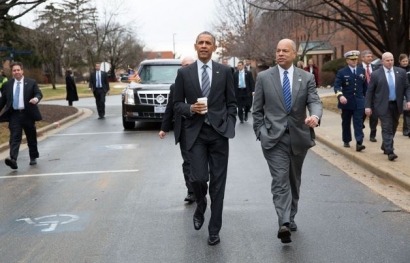
The proposal, which is guaranteed to face stiff opposition in the Republican-controlled Congress, shows renewed vigor in the administration's efforts in the area of climate change. Among its highlights are a new $4 billion fund, the Clean Power State Initiative Fund, which is intended to help U.S. states comply with draft Environmental Protection Agency regulations cutting carbon emissions from coal-fired power plants.
Those regulations are expected to be finalized this summer. If it survives budget negotiations, the money from the federal government could be used for renewable energy projects, energy efficiency programs, climate adaption or infrastructure grants, the White House says.
The budget also proposes to boost federal spending on clean-energy technology, with $7.4 billion being invested across the Energy and Defense departments. That's up from the $6.5 billion that Congress spent for clean-energy programs last year.
Among the specific programs seeing an uptick in money allocated to them are those focusing on advanced vehicles, energy-efficient vehicles, and carbon capture and storage from fossil fuels.
In addition, about $100 million would be dedicated to permitting renewable-energy projects on federal lands and waters, with a goal of permitting 20 GW of renewables by 2020.
And along with that, the administration is calling for the permanent renewal of key renewable-energy tax credits such as the production tax credit and credits for wind and solar projects, proposals which together would cost the government $31.5 billion over the next decade.
The wind credit expired at the end of 2013, and Congress must vote to renew it. The solar industry’s credit expires at the end of 2016.
The budget proposal also calls for tax credits for renewable diesel and biodiesel, for the construction of more sustainable green homes, and for vehicle fleets using renewable fuels.
But that's not all. The president's plan proposes repealing a oil, natural-gas and coal tax deductions that the administration estimates would raise nearly $50 billion for the federal government over the next decade, with the largest portion of that money, a whopping $45.5 billion, coming from the oil and natural-gas sector alone.
The budget documents also outline the stark reality of climate change and the risks it poses to effective government. According to the White House, the federal government has incurred more than $300 billion in direct costs from the effects of extreme weather and crop losses.
For additional information:

